The 2014 RIBA Stephen Lawrence Prize shortlist
By Bustler Editors|
Friday, Sep 5, 2014
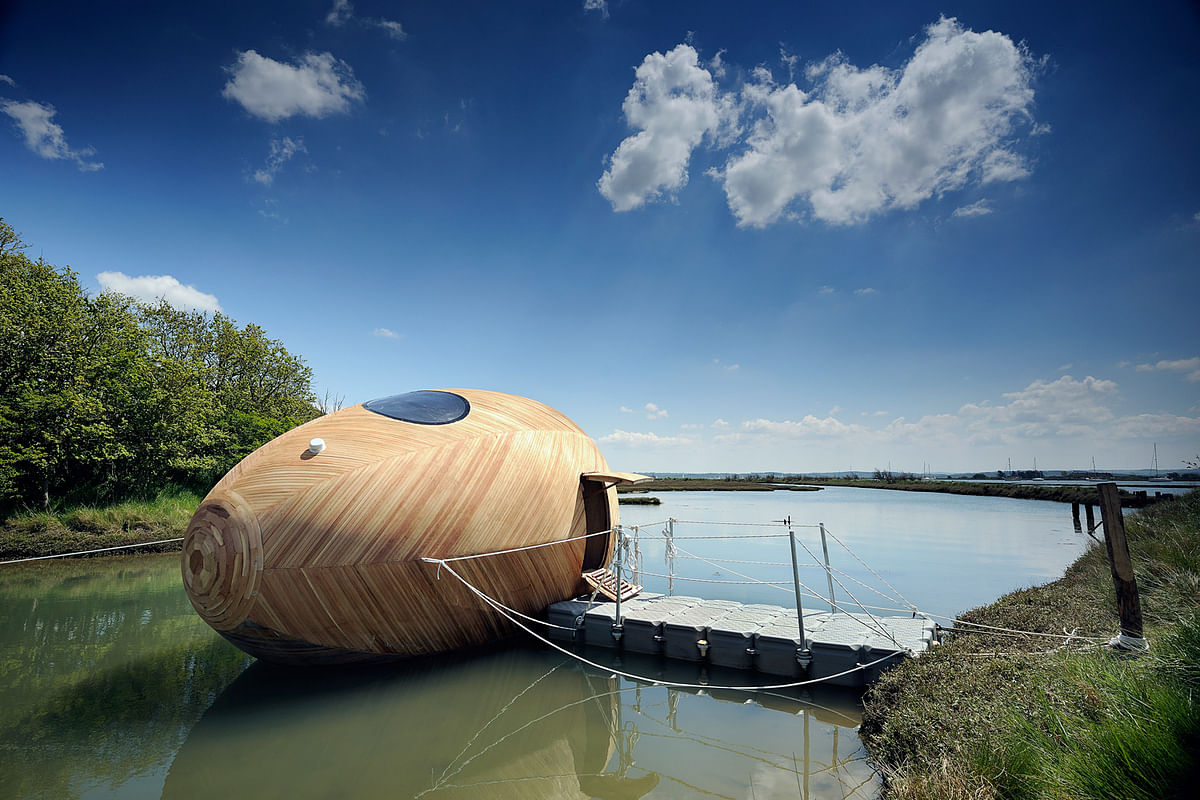
Related
In light of RIBA's announcement yesterday of the 2014 Manser Medal shortlist, the Institute also revealed the 2014 Stephen Lawrence Prize shortlist. Dedicated to the memory of Stephen Lawrence—a teenager who aspired to become an architect but was murdered in 1993—the annual Stephen Lawrence Prize was set up to highlight emerging talent and working with small construction budgets.
The prize recognizes the best UK-based projects built with a construction budget of less than £1 million. Six houses were shortlisted:
- The Exbury Egg, New Forest by PAD Studio (work space)
- Tree House, east London by 6a architects (residential project)
- Ott's Yard, north London by vPPR Architects (residential project)
- Alex Monroe Studio Snowfields, south London by DSDHA (work space)
- Royal William Yard Staircase, Plymouth by Gillespie Yunnie Architects (infrastructure project)
- House No 7, Isle of Tiree, Scotland by Denizen Works (residential project)
The winner will be announced during the RIBA Stirling Prize party at the RIBA in London on October 16.
Scroll down to have a look at them.
The Exbury Egg, New Forest by PAD Studio (work space)
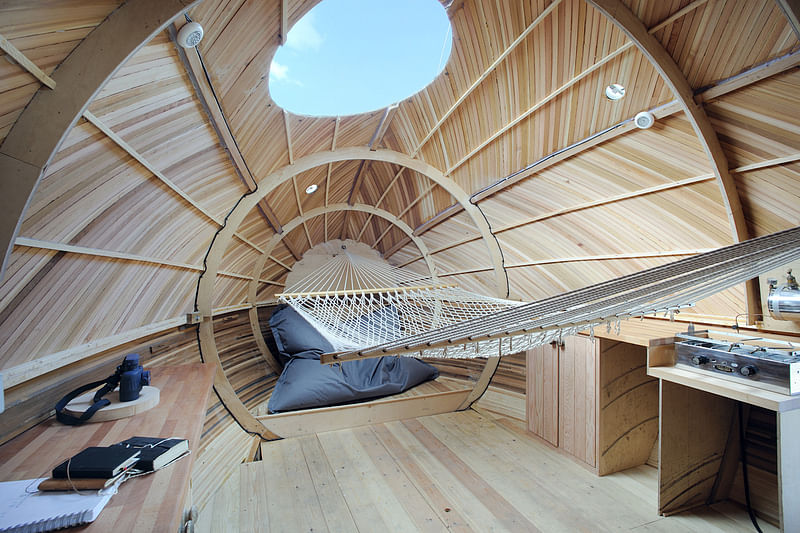
Location: Exbury
Architect: PAD Studio
Client: SPUD
Contractor: Beau Wood Structures
Contract Value: £40,000
Date of completion: May 2013
Gross internal area in sq m: 17
"The Egg is a collaborative project between the artists and the architects, after the artist was inspired by a nest full of eggs. It has been created through partnership between the artist and local craftsmen using age-old boat building techniques; becoming an object of art in itself. The cladding gives a unique pattern to the structure which is different on every angle and forever changing. This small but spacious structure houses the bed, wet room, and a desk space for the artist to sufficiently live for a year. The egg shape must have given the design team many challenges including the restrictions of buoyancy which clearly requires specialist technical expertise. It is very clear that the team had complimenting skill areas between themselves to execute this very successful and very individual project."
Tree House, east London by 6a architects (residential project)
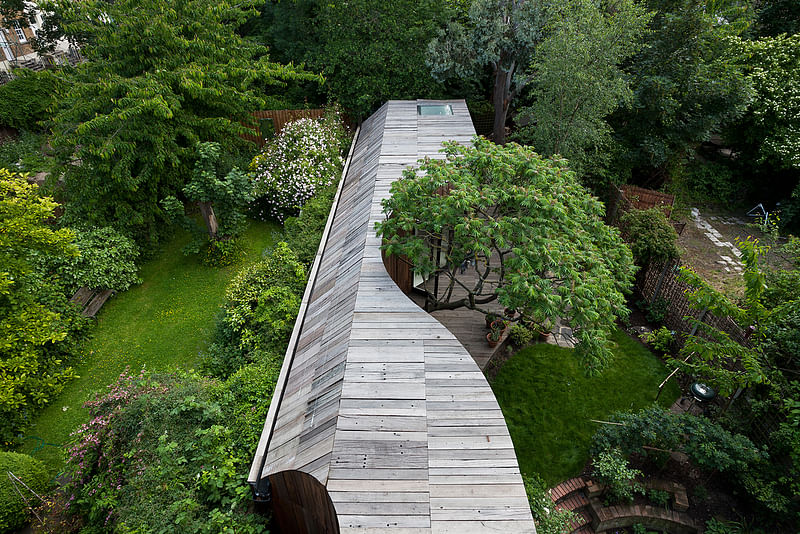
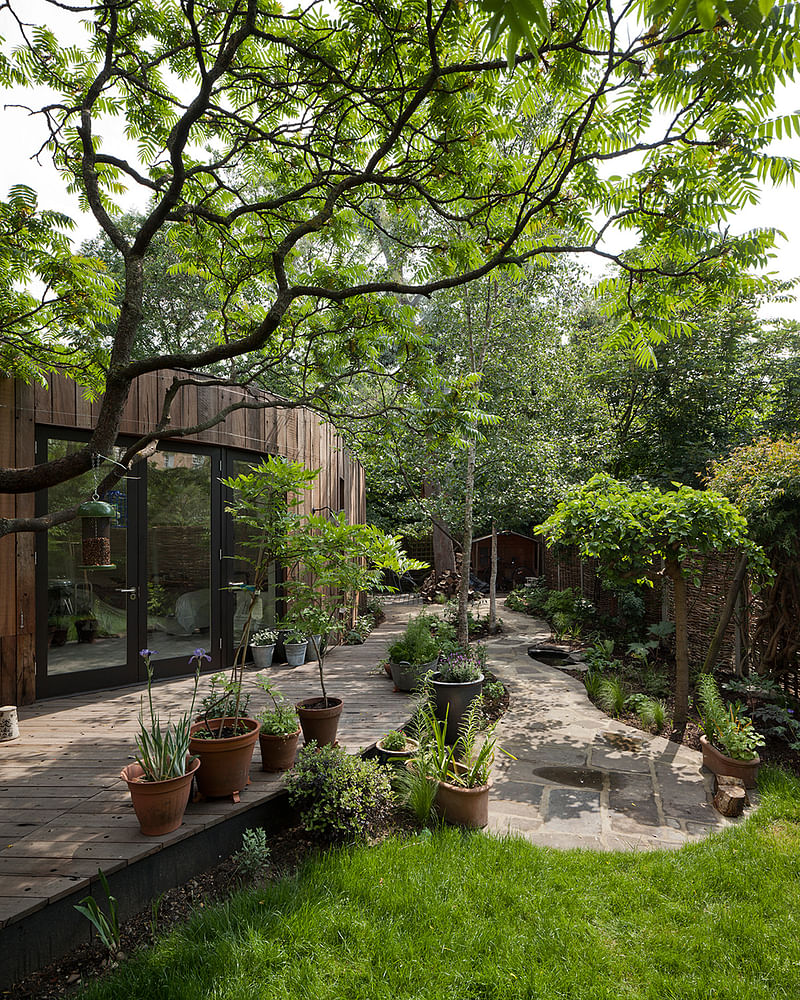
Location: London
Architect: 6a Architects
Client: confidential
Contractor: John Perkins Projects
Structural Engineer: Price & Myers
Contract Value:confidential
Date of completion: 03.01.2013
Gross internal area in sq m: 57
"This sensitive and subtle little building elegantly extends a Grade II listed house, so its occupant, who has become increasingly immobile and wheelchair bound, can live independently in her home as an integral member of her family, with her husband and their daughters; and can continue actively to enjoy her garden.
Their home consisted of two small 1830s brick weavers' cottages which were linked together in the 1970s. The two ground floors were at different levels and these were half a storey and more above a narrow back garden, to which they were linked via a veranda on chunky concrete columns, the legacy of a previous owner. The garden which was overgrown and full of flowers focused on a sumac tree and was informally linked to those of neighbours.
This new single storey extension makes all the communal rooms and principal bedroom accessible and effectively re-orientates the focus of the house. A ramp within the frame of the veranda connects the two ground floor levels, providing access between the kitchen and living room. Within the new addition, a ramp curves around the tree in the garden, down to a new bedroom and a washroom. The former has the quality of a delightful and very private summer house, which opens up onto a terrace which overlooks the garden and back to and through the original house.
The new building is timber frame on timber foundations and is clad in reclaimed Jarrah skimmings. Internally it is all painted white and simply detailed. Its exposed timber joists inevitably have quirky corners to accommodate the curves and the minimum headroom feasible, where the building abuts the neighbour's garden. These, combined with the softwood lining and plywood floors, give the building a gentle and charming Shaker aesthetic.
The hypotheses of the Tree House are that everything should be reversible and infringe as minimally as possible on the listed buildings and that there should be a neighbourly use of shared gardens. Wherever possible existing elements have been kept and reused, including the oversized concrete columns supporting the veranda. The construction is of sustainably sourced softwood, with substantial insulation and double-glazed windows. External cladding is reclaimed Jarrah skimmings, recut and fitted in-situ. Heating is under floor and ventilation is natural.
This is a delightful building which has transformed this home, not only in making it accessible but also in embedding it in the garden, with a very simple and beautiful aesthetic."
Alex Monroe Studio Snowfields, south London by DSDHA (work space)
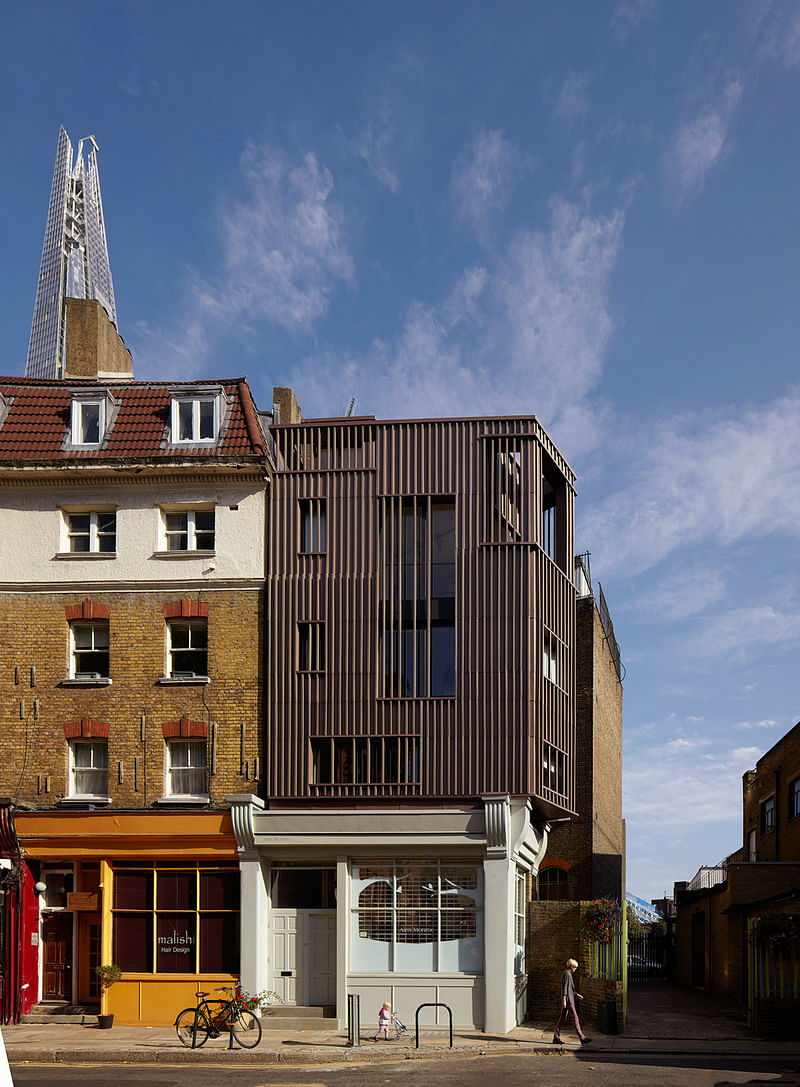

Location: London
Architect: DSDHA
Client: Alex Monroe
Contractor: Neilcott Construction
Structural Engineer: Structure Workshop
Services Engineer: Con-Serve
Contract Value: 439,000
Date of completion: 14.09.2012
Gross internal area in sq m: 115
"This is a cheeky little project that won the Jury over with four conceits:
Conceit 1- Clearing the site, then rebuilding the ground floor as a shop-front in an architectural language conveying the pretence that this had always been part of the adjoining terrace, complete with panelled doors, timber cornice and corner scrolls, creating a setting for...
Conceit 2-Expressing the rest of the accommodation as a three-storey box and roof terrace bearing no relationship with its base whatever, with almost a suggestion that it had
Somehow been "nudged" out of place, and...
Conceit 3-Inviting an absurd comparison with the nearby Shard through the verticality of its
Facade ribs as well as (less absurdly) to the New York Flatiron Building through its sharp end-of-terrace "bookend" quality, not to mention...
Conceit 4-Using a grey bronze hand-folded pigmented zinc sheet for the ribbed cladding as an expression of the handcraft taking place daily inside.
However one shouldn't overlook some of the building are other qualities. The hand folded zinc has a precious and precise quality amplified by the changes of luminosity derived from changing light conditions. Games are also played with the depth and spacing of ribs alluding to surrounding architectural features. Any notion of an
Ordered setting out of fenestration is dispelled through widely differing proportions of individual windows.
Internally the choice of an unfinished cross-laminated timber panel structure complete with all its imperfections together with the compressed scale of the principal rooms already give the working environment a welcoming lived-in quality. This is exploited in what the architects call the "social staircase" with its numerous alcoves for small scale artefacts and curiosities.
It was extraordinary to learn that the zinc cladding was opposed by the local planners right up to the planning committee meeting on account of it being out of keeping with the largely masonry nature of buildings within the Bermondsey Street Conservation Area. Both client and architect should be applauded for sticking to their guns."
Ott's Yard, north London by vPPR Architects (residential project)

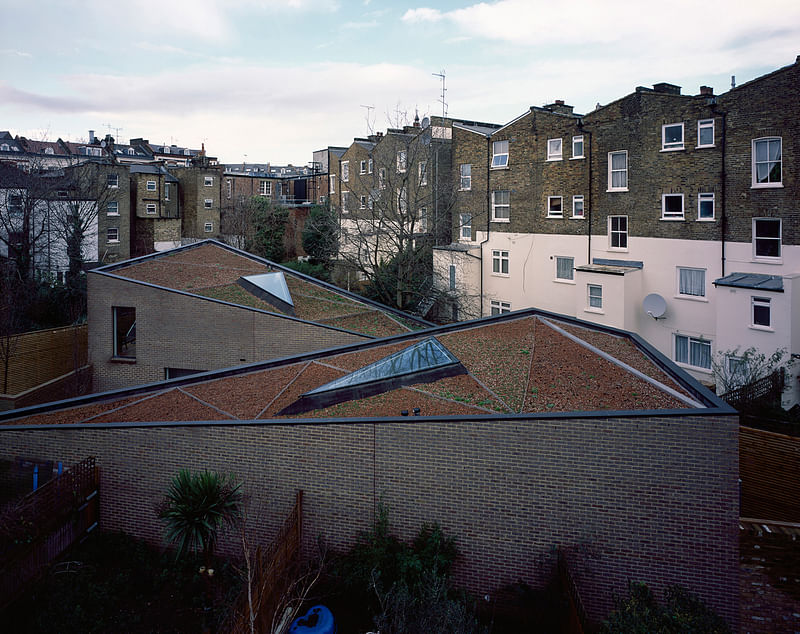
Location: 1 & 2 Otts Yard, Southcote Rd, London N19
Architect: vPPR Architects
Contractor: Varbud
Structural Engineer: Heyne Tillett Steel
Services Engineer: Pearce and Associates
Contract Value: 693,922
Date of completion: 17.08.13
Gross internal area in sq.m: 243
"The project consists of two houses located in a trapezoidal shaped backland site bounded on all sides by Victorian terraced houses. The constraints and challenges were considerable and dealing with no fewer than twenty-three neighbours and associated party wall agreements. This was the first independent project for this firm of young architects and developers.
The plan uses an abstraction of the site geometry to create a triangular/trapezoidal forms for the two houses. The houses are separated by centrally located triangular entrance courtyard. On first sight the tightly tapering entrance court yard appears uncomfortable, however the use of a door near to the end of the courtyard allows an opening out into the entrance of the one of the houses; this entrance sequence is very satisfying. The motif of the triangle is repeated throughout the project and this obsessional playfulness gives the houses a 'folly' like joy. This playfulness does not detract from a clear and well-resolved spatial hierarchy of the houses. The houses are essentially large volumes that are inhabited by mezzanine floors benefiting from generous and spacious primary spaces that are in direct contrast with the modest scale of the houses. Both homes have a beautiful sense of light, and remarkably engage with the outside with discreet views to the garden. Where views through vertical surfaces are not possible the architects have inserted triangular skylights.
There is a wonderful obsession with the triangle throughout this project from the plan, to the landscaping all the way through to the floor and wall finishes, this is fun and quirky and entirely appropriate. The detailing is well conceived and resolved and has been constructed to a high standard.
This project balances a sense of fun with rigorous attention to detail. The architects have created their own project that is a testament to their ingenuity, determination, skill and bravery; this combination has delivered two very liveable, spatially complex, quirky and joyful homes."
Royal William Yard Staircase, Plymouth by Gillespie Yunnie Architects (infrastructure project)
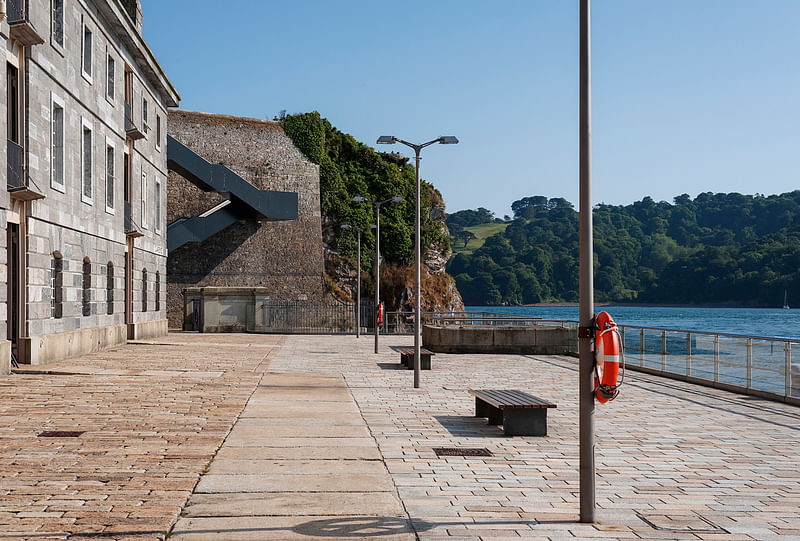

Address of Scheme: Plymouth
Architect: Gillespie Yunnie Architects
Client: Urban Splash
Contractor: Urban Splash Build
Structural Engineer: Hydrock Structures 1
Contract Value: £250,000
Date of completion: 1/6/13
Gross internal area in sq m: 45
"A staircase links the coastal path to the Royal William Yard negotiating a 12 metre high defensive wall that encloses one end of the former naval base. Now while the conversion to cafes and apartments of many of the former administration and barrack blocks is surely one of the best examples of its kind in the UK, the new staircase at the far end of the yard, provides a moment of joy. Cutting through the top of the wall with a crisp steel liner, it snakes down the massive stone wall, held away and cantilevered to a half landing with tall glass balustrading that for a brief moment makes you feel like a diver about to drop into the ocean. The stair then turn back on itself and makes a final leap away from the wall to land with no fuss on the stone flagged floor. It is matter of fact, muscular, yet poetic. The structure is formed in steel box sections to form visible girders to each side, clad externally in a perfectly chosen dark blue-grey powder coated panels that wrap over the top concealing LED lighting that changes from red to blue to yellow, making the off-white painted staircase simply magical at night. If staircases offer ascent (to a better place?) then this one certainly does."
House No 7, Isle of Tiree, Scotland by Denizen Works (residential project)
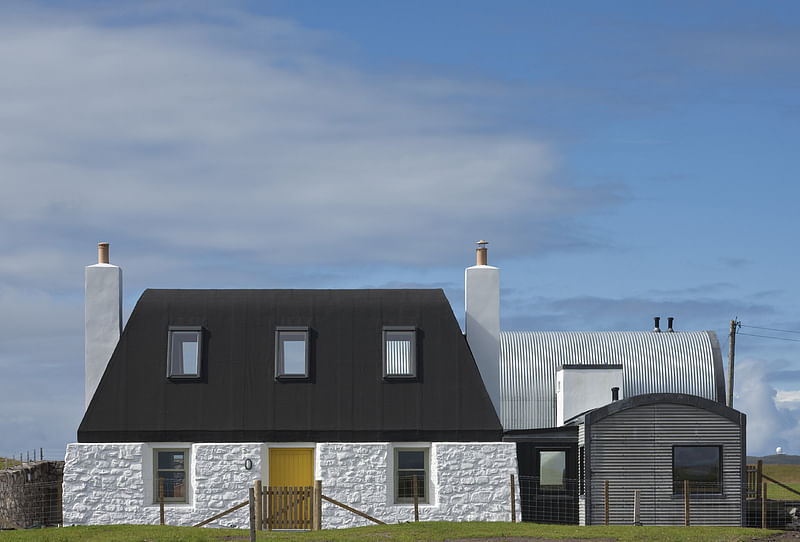
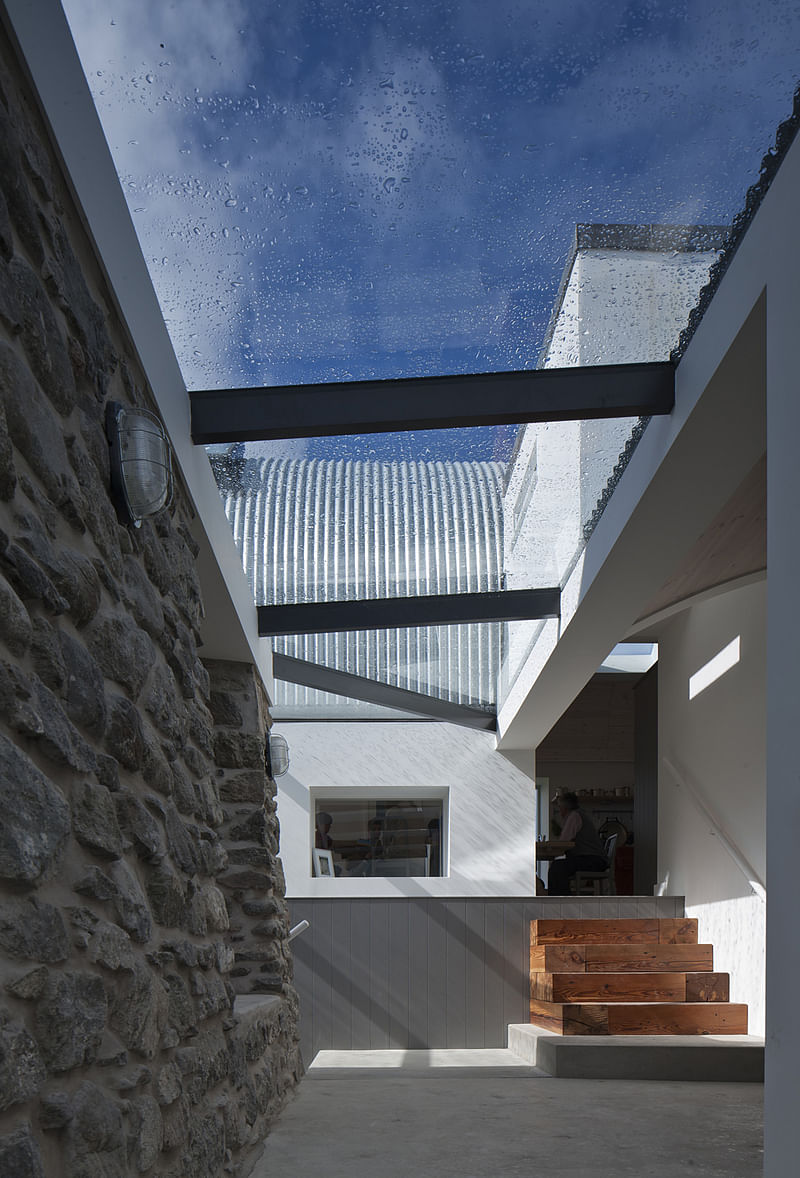
"This restoration and extension of a ruined, B-listed, Tiree black-house effectively provides two houses within a single curtilage. The extensions follow the spirit of local agricultural buildings in their materials, roof forms and particularly in the use of corrugated cladding. The tradition of reconstructing Hebridean black-houses with black tarred roofing, rather than their original thatched roofs (held down by stone weighted netting), is sufficiently long established to have become an alternative local vernacular. This approach, allied to the utilitarian agricultural appearance of the extensions, creates an external form that is both contextual and appropriate.
Set in the southern coat of the island, House no. 7 enjoys views of Duin Bay to the south, set within a typical Tiree undulating machair, punctuated by other traditional housing. Without any natural shelter from the wind, the house hunkers down within its exposed setting. However, the interior is designed to be light, bright, welcoming and cosy, in contrast with the robust forms of the exterior. Extensive use of timber, alongside the exposed natural stone, enhances the perceived warmth of the interior while heating is provided through an air-source heat pump.
Internal circulation and the connection between the two discreet living spaces is provided by a glass-roofed corridor which again enhances light to the interior, contributing to the dual character of this extraordinary development as a clever play on the traditional in the exterior and a dwelling full of delight within. The quality of this internal space is such that it is difficult to express in words, or indeed, show in photographs, its impact in three dimensions. It is truly inspiring, with the quality of the detailing adding to the sense of pleasure it creates, and indeed inspiring a reassessment of the quality of thought behind the design.
What is particularly noteworthy about this entry is the quality of the detailing; the way in which materials have been selected and their relationship to each other. This house is notable for the tactile pleasure which is invoked by every simple activity, even just opening a door. It is full of thoughtful playfulness."
This year's judges are Baroness Lawrence of Clarendon; Doreen Lawrence CBE, the mother of Stephen Lawrence; Marco Goldschmied, RIBA Past President and Founder of the Marco Goldschmied Foundation (which established the RIBA Stephen Lawrence Prize in 1998); Anthony Boulanger, Partner at AY Architects, winners of the 2013 Stephen Lawrence Prize; and Joe Morris, Director at Duggan Morris Architects, winners of the Prize in 2012.

Share
0 Comments
Comment as :